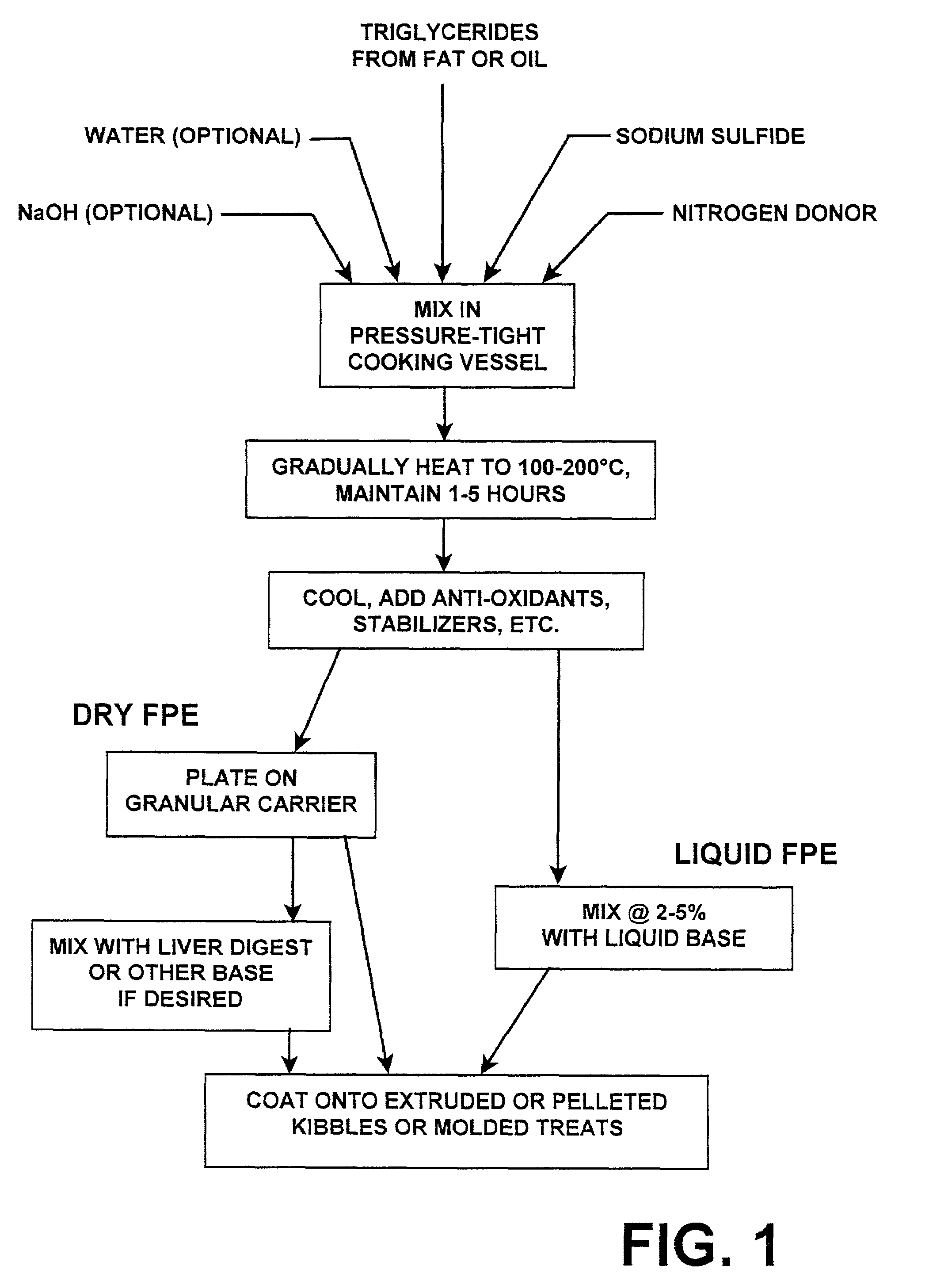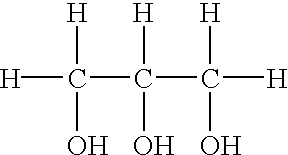Treatment of vegetable oils or animal fats with sulfur or nitrogen donor compounds for animal food flavorings
a technology of vegetable oils and animal fats, applied in the field of pet food and pet food chemistry, can solve the problems of not being as easy to handle or commercially valuable, and testing a candidate fpe agent against a low-cost “basal” preparation is not rigorous and convincing, and achieves economical flavor/palatability enhancers, flavor and palatability, and high-quality
- Summary
- Abstract
- Description
- Claims
- Application Information
AI Technical Summary
Benefits of technology
Problems solved by technology
Method used
Image
Examples
example 1
Treatment of Anhydrous Butter Oil with Sulfide
[0091]The following ingredients were mixed together and placed in a Parr reaction vessel:
[0092]
sodium sulfide, 25% w / w in water50ganhydrous butter oil300gaqueous solution, 50% sodium hydroxide45gwater460gPekins Yeast slurry (40% solids)140g
[0093]The cooking temperature was gradually increased to 200° C. over 70 minutes, held at 200° C. for 50 minutes, and gradually decreased to 50° C. over 60 minutes. Five grams of “Phaulox-P” antioxidant were added. The resulting mixture was added, at quantities ranging from 2.5% to 10% by weight, to a standard liquid palatability enhancing preparation, which had previously been prepared by using hydrolytic enzymes to digest chicken livers.
[0094]Based on two-bowl tests using dogs, this butter oil preparation improved the palatability of the standard liquid liver digest by 2-3×, compared to the same liver digest with no additives.
example 2
Treatment of Poultry Fat with Sulfide and Ammonium
[0095]The following ingredients were mixed together and placed in a Parr vessel:
[0096]
Poultry fat338.2gWater531.9gSodium hydroxide (granular)71.2gSodium sulfide (granular)25gAmmonium hydroxide12.5g
[0097]The cooking temperature was gradually increased to 140° C. over 45 minutes, held at 140° C. for 60 minutes, and gradually decreased to 50° C. over 30 minutes. A mixture containing 0.2 g tocopherol as an antioxidant and 21 g Tween-80 as a surfactant was added. The resulting mixture was added, at 5% by weight, to the same type of standard chicken liver liquid digest described in Example 1.
[0098]Based on two-bowl tests using dogs, this poultry fat preparation improved the palatability of the liver digest by 2-3×, compared to the same liver digest with no additives.
example 3
Treatment of Chicken Fat with Sulfide
[0099]The following ingredients were mixed together and placed in a Parr vessel:
[0100]
Chicken fat979gSodium sulfide (25% w / w in water)20g
[0101]The cooking temperature was gradually increased to 200° C. over 70 minutes, held at 200° C. for 50 minutes, and gradually decreased to 50° C. over 60 minutes. One gram of “Phaulox-P” antioxidant was added, and the resulting mixture was added, at 2.5% by weight, to a standard chicken liver liquid digest.
[0102]Based on two-bowl tests using dogs, this chicken fat preparation improved the palatability of the standard liquid liver digest by at least 2×, compared to the same liver digest with no additives.
PUM
 Login to view more
Login to view more Abstract
Description
Claims
Application Information
 Login to view more
Login to view more - R&D Engineer
- R&D Manager
- IP Professional
- Industry Leading Data Capabilities
- Powerful AI technology
- Patent DNA Extraction
Browse by: Latest US Patents, China's latest patents, Technical Efficacy Thesaurus, Application Domain, Technology Topic.
© 2024 PatSnap. All rights reserved.Legal|Privacy policy|Modern Slavery Act Transparency Statement|Sitemap



